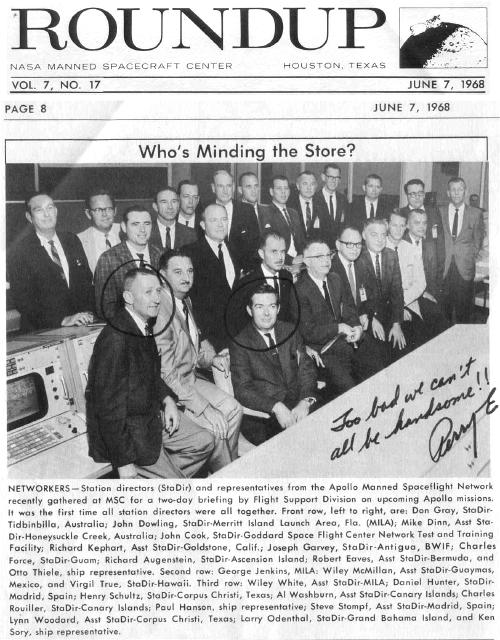Introduction
NASA’s Manned Space Flight Network had its genesis during Project Mercury, as a necklace of stations positioned around the world to maintain communications with manned spacecraft in low Earth orbit.
The network grew in sophistication during Project Gemini. In Australia, the focus shifted from Muchea Tracking Station, just north of Perth, to the newly established Carnarvon Tracking Station – largely because it would be better placed for Gemini launch azimuths and longer duration missions. The Red Lake station, north of Woomera, continued support during Gemini.
For Apollo, the Unified S-Band communications system was developed. Three 85 foot (26 metre) stations were built for communication at lunar distances. Each was teamed with a nearby 85 foot Deep Space Network antenna for redundancy and versatility. In addition, a series of 30 foot (9 metre) USB antennae were established around the world, as well as tracking ships and the ARIA fleet of modified and instrumented EC-135N aircraft for critical support in earth-orbit, at TLI and during re-entry.
The MSFN (generally pronounced “misfin” in the US and M-S-F-N in Australia) was managed by the Goddard Space Flight Centre, in Greenbelt, Maryland. An amazingly sophisticated voice and data network, NASCOM, centred on Goddard, brought the MSFN together. All communications from Houston went via Goddard.
The map below shows the stations supporting Apollo 11 at Trans Lunar Injection.
|
The Manned Space Flight Network – TLI groundtrack map from
Apollo 11.
Click for a 1.5MB version.
With thanks to Bob Fish of the USS Hornet Museum,
who kindly scanned his copy of this map.
|
Hear the Network status check just prior to the Apollo 8 launch for a feel of how many stations would support a mission.
Each MSFN station was headed by a Station Director (StaDir) and Deputy Station Director, and was staffed by NASA personnel and contractors. Bendix Field Engineering Corporation (BFEC) had the contract for stations worldwide — with the exception of Australia. In Australia, the stations were managed by the Department of Supply, assisted by private industry.
|
In May 1968, the MSFN’s Station Directors met in Houston.
Mike Dinn (HSK Deputy StaDir) was there from Honeysuckle.
Don Gray (Tidbinbilla) and Jack Dowling (Australian-born StaDir of Merritt Island) are seated next to Mike.
Scan by Mike Dinn.
|


